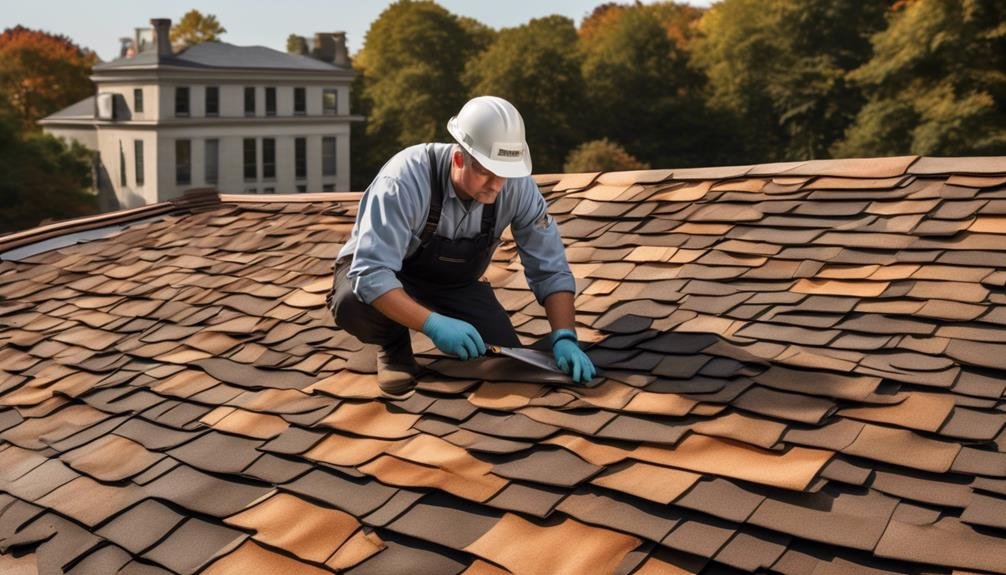Preserving historic homes is not merely about maintaining old structures but about safeguarding the legacy and architectural heritage that these edifices represent. The roof, a dominant and visually significant component, plays a pivotal role in the overall aesthetic and structural integrity of historic buildings.
Expertise in specialized roofing services, such as those provided by Amstill Roofing – Round Rock, is essential in addressing the unique demands of these ancient treasures. These professionals understand that each historic building has its own narrative, reflected in the materials and craftsmanship of its roof, necessitating a tailored approach to repair and replacement that respects the building’s original character.
Understanding the Significance of Roofing in Historic Buildings
Roofing in historic buildings is a critical element that serves both functional and aesthetic purposes. The materials and design of historic roofs are indicative of the period’s architectural trends and technological capabilities.
For instance, slate and clay tiles often denote the roofing preferences of certain eras and regions, providing not only protection from the elements but also adding to the building’s historical and cultural significance. Understanding these nuances is crucial for any restoration project, as the roof must be preserved or restored in a way that honors the building’s heritage while ensuring its structural integrity and longevity.
Challenges in Repairing and Replacing Roofs on Historic Homes:The process of repairing or replacing roofs on historic homes is fraught with challenges. One of the main difficulties is sourcing materials that match the original in terms of texture, color, and aging characteristics. This is essential to maintain the visual continuity and historical accuracy of the property.
Moreover, the methods used in the original construction may no longer be common practice, requiring craftsmen skilled in traditional techniques. There’s also the challenge of meeting modern building codes and energy efficiency standards without compromising the historical integrity of the home. These complexities necessitate a deep understanding of both historical preservation and contemporary roofing practices.
Best Practices for Roof Repair and Replacement in Historic Preservation
Adhering to best practices in historic roof repair and replacement is paramount to ensure the preservation of the building’s character and historical value. This includes conducting a detailed assessment of the roof’s condition, understanding the historical context of the building, and choosing materials and methods that are sympathetic to the original design. Careful examination of the roof not only reveals the extent of decay but also helps in planning the restoration in a way that aligns with the building’s architectural integrity.
Collaboration with historians, architects, and preservationists is essential to gain insights into the historical significance of the roofing materials and techniques used. These experts bring a wealth of knowledge, ensuring that the restoration work respects the building’s heritage and contributes to its story. Skilled artisans who specialize in traditional roofing methods are often employed to replicate the craftsmanship of the past, ensuring that every detail is restored to its former glory.
Innovative Solutions and Materials for Historic Roofing
The field of historic preservation has benefited greatly from technological advancements in roofing materials and methods. Modern solutions, such as composite materials designed to replicate the look of ancient roofing materials, offer durability and ease of maintenance while respecting the aesthetic and historical aspects of historic homes.
These innovative products can withstand environmental stressors better than their ancient counterparts, providing a practical solution that meets the needs of both preservation and modern functionality. Furthermore, the use of non-invasive diagnostic tools, like drone imaging and 3D scanning, allows for a detailed analysis of the roof’s condition without causing damage to the structure, ensuring that repairs and replacements are carried out with precision and care.
Conclusion
The repair and replacement of roofs on historic homes require a nuanced approach that respects the delicate balance between preserving historical authenticity and meeting contemporary standards. This delicate balance demands a reverence for the past, honoring the original craftsmanship and materials that give these buildings their unique character, while simultaneously embracing modern technological advancements to ensure their functionality and durability. Engaging in a meticulous process that marries traditional methods with modern innovations allows for the preservation of the historical integrity of these treasured structures.
Specialized companies, such as Amstill Roofing – Round Rock, play a pivotal role in this intricate process. Their expertise in navigating the complexities of historic roofing ensures that these structures can withstand the elements and time, preserving them for future generations. These companies understand that the roofs of historic homes are more than mere protective coverings; they are integral components of the building’s narrative, reflecting the architectural trends and cultural values of their time.

